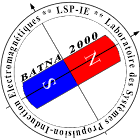Abstract:
Temperature, solar insolation, shading and faults affect the performance of the photovoltaic array. Often, the PV arrays get shadowed, completely or partially, by the passing clouds neigh boring buildings, towers or by trees, and other utilities. The situation is of a interest in a case of the large PV power plants. In the case of the shading the characteristics of the PV module are more complex with the several peak values. Under such conditions, it is very difficult to determine the maximum power point (MPP). MATLAB-programmed modelling and simulation of photovoltaic module is presented here, by focusing on the effects of partial shading on the output of the photovoltaic (PV) module and Faults Bypass Diode. The proposed models facilitate simulating the dynamic performances of PV-based power systems and have been validated by means of simulation study. The southern part of Algeria, where the experimental system is mounted, is particularly well appropriate to photovoltaic systems. To evaluate the effectiveness of the proposed model, experiments have been conducted to compare the experimental and simulated current-voltage (IV) and power-voltage (PV) curves of a PV system under some predefined partial shading and faults bypass diode, using different PV technologies such as mono-crystalline and multi-crystalline.
